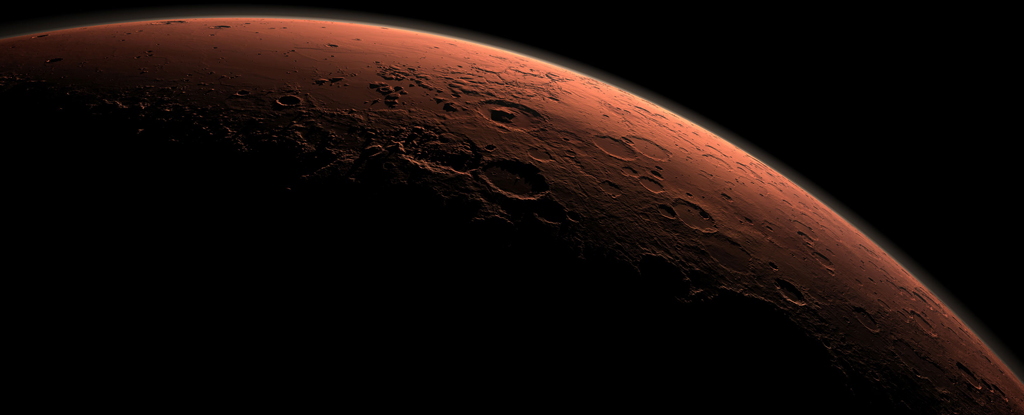A slow cosmic dance between Earth and Mars has a hidden effect on cycles in the deep ocean.
According to a new analysis of the deep-sea geological record, the gravitational interaction between the two planets results in cyclic changes in deep ocean currents that recur every 2.4 million years. It’s a finding that will help scientists be able to better understand and predict Earth’s climate going into the future.
“We were surprised to find these 2.4-million-year cycles in our deep-sea sedimentary data,” says geoscientist Adriana Dutkiewicz of the University of Sydney. “There is only one way to explain them: they are linked to cycles in the interactions of Mars and Earth orbiting the Sun.”
In recent years, scientists have started to identify what they have termed an astronomical “grand cycle”. This is a 2.4 million-year pattern linked to an alignment between the orbits of Earth and Mars.
Direct evidence of this interaction in Earth’s geological record is scarce, but what we have found suggests that the peak of this cycle is linked to higher solar radiation on Earth, as well as a warmer climate. This is unrelated to the anthropogenic climate change Earth is currently experiencing.
We know that other planets can influence Earth’s path around the Sun, tugging it into a more elongated shape on regular cycles known as Milankovitch cycles that coincide with the rise and fall of ice ages. However, these are much more frequent (although also unrelated to anthropogenic climate change), occurring over tens of thousands of years, and they’re created primarily by interactions with Jupiter and Saturn – far heftier planets than the relatively titchy Mars.
“The gravity fields of the planets in the Solar System interfere with each other and this interaction, called a resonance, changes planetary eccentricity, a measure of how close to circular their orbits are,” explains geophysicist Dietmar Müller of the University of Sydney.
Milankovitch cycles were confirmed in 1976 when scientists found they had been recorded in ocean-floor sediments.
Dutkiewicz and her team were looking for something different. They were trying to determine if the currents at the bottom of the ocean change when the climate is warmer – whether they become more vigorous, or slow down. A break in sediment means faster eddies on the seafloor, while steady sediment accumulation indicates calmer conditions.
They based their analysis on 293 scientific deep-sea drill holes around the world, in which they found evidence of 387 breaks in the sediment over the past 70 million years. While plotting these breaks over time, they noticed a curious clustering – the 2.4 million-year cycle that matched the astronomical grand cycles of Earth and Mars.
In addition, the breaks lined up with known periods of warmer climate, including the famous Paleocene-Eocene thermal maximum that took place some 56 million years ago, when Earth’s temperature rose by up to 8 degrees Celsius (14.4 degrees Fahrenheit). This event has been attributed to a number of different causes, including a glitch in Earth’s orbit and a passing comet, so a potential link to Mars could be a contributing factor.
It’s a surprising finding, because models (and observational evidence) suggest that the circulation system responsible for the Gulf Stream could shut down as global warming melts sea ice. So scientists had thought that a warming climate would result in a deep ocean that is much less active.
On the other hand, major storms become much more frequent in warmer climates, producing sediment-stirring eddies that can extend as far as the deepest abyssal depths of the ocean. This could mean that the oceans are a little bit more resilient to climate change than we thought they were. (Humans still aren’t, though, so we should still try to do something about it.)
“Our deep-sea data spanning 65 million years suggest that warmer oceans have more vigorous deep circulation,” Dutkiewicz says. “This will potentially keep the ocean from becoming stagnant even if Atlantic Meridional Overturning Circulation slows or stops altogether.”
The team’s research has been published in Nature Communications.





